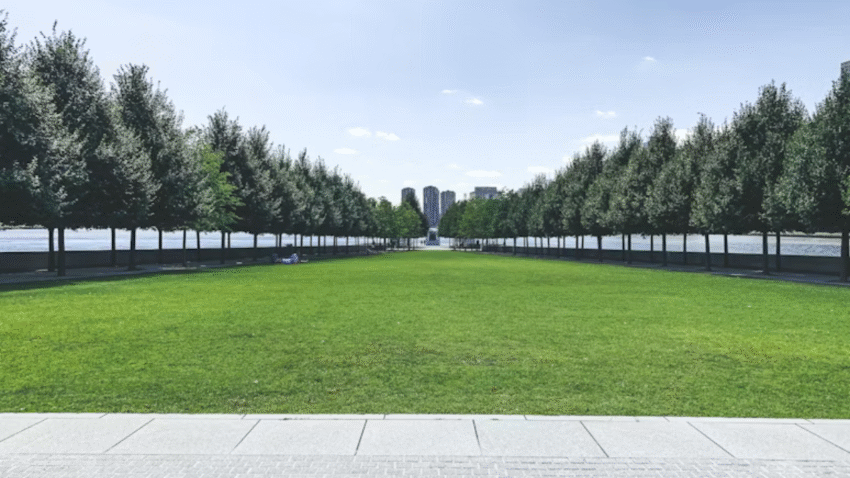Introduction
Dreaming of a lush, healthy lawn without relying on harsh chemicals? You’re not alone! More homeowners are learning how to go chemical-free with their lawn care to protect their families, pets, and the environment. This step-by-step guide will show you exactly how to create a green, resilient lawn naturally — no synthetic fertilizers, pesticides, or herbicides needed.
Why Going Chemical-Free Matters for a Healthy Lawn
Conventional lawn care products can provide quick results, but they often come with hidden costs: runoff pollution, soil degradation, harm to pollinators and beneficial insects, and risks to children and pets.
A chemical-free approach focuses on building healthy soil, which naturally supports thick, disease-resistant turf. The result? A self-sustaining lawn that needs less water, fewer inputs, and gives you peace of mind.
Step-by-Step Guide to Go Chemical-Free With Your Lawn Care
Ready to break up with chemicals? Here’s how to get started and succeed long-term:
1. Test Your Soil First
Healthy lawns start with healthy soil. Do a soil test through your local extension office or garden center. This will tell you:
- Your pH level
- Organic matter content
- Nutrient needs
Knowing this lets you address deficiencies naturally without guessing (and wasting money).
2. Feed Your Lawn Organically
Skip the synthetic fertilizers and switch to organic options like:
- Compost: Top dress your lawn once or twice a year with ¼–½ inch of screened compost to add nutrients and improve soil structure.
- Natural fertilizers: Use slow-release products like feather meal, bone meal, fish emulsion, or alfalfa meal to feed soil microbes and boost long-term fertility.
Always follow label rates — more isn’t better!
3. Build Healthy Soil Life
A thriving soil ecosystem breaks down organic matter, suppresses disease, and provides nutrients naturally. Boost soil life by:
- Adding compost tea or microbial inoculants
- Avoiding synthetic chemicals that kill beneficial microbes
- Keeping soil covered with grass or mulch
Over time, your soil will become more fertile and resilient.
4. Aerate to Reduce Compaction
Aeration is one of the best chemical-free ways to fix compacted soil and improve water, air, and nutrient flow:
- Use a core aerator once a year for compacted lawns.
- Focus on high-traffic areas like pathways, play zones, or pet areas.
Follow up with compost top dressing for maximum impact.
5. Water Wisely
Healthy, deep roots help your lawn outcompete weeds and resist drought — naturally. Water your lawn deeply and less often to encourage deeper roots:
- Aim for about 1 inch of water per week, including rainfall.
- Water early in the morning to reduce evaporation.
- Use a rain gauge to avoid overwatering.
6. Mow High and Leave Clippings
Longer grass shades soil, conserves moisture, and crowds out weeds:
- Set your mower blade to 3–4 inches.
- Never cut more than one-third of the blade at a time.
- Leave clippings on the lawn — they break down and feed your soil (natural “grasscycling”).
7. Tackle Weeds Naturally
Without chemicals, you’ll need a bit more patience and strategy for weeds:
- Hand-pull or use weeding tools for stubborn intruders.
- Spot-treat cracks or paths with natural solutions like boiling water or vinegar (be careful — vinegar can damage surrounding grass).
- Keep your lawn thick and healthy to naturally shade out weed seeds.
Over time, your soil will favor grass, not weeds.
8. Manage Pests Organically
Healthy soil and diverse turf are your first line of defense. If pests show up:
- Identify the pest correctly.
- Use natural solutions like beneficial nematodes for grubs or milky spore for Japanese beetle larvae.
- Encourage natural predators like birds and ladybugs by planting native flowers nearby.
Never use broad-spectrum pesticides that kill the good guys too!
9. Overseed Bare Spots
A dense lawn naturally resists weeds and pests. If you have thin areas:
- Overseed in fall or spring with a grass variety suited to your climate.
- Use a seed blend that includes disease-resistant and drought-tolerant types.
Rake, spread, water, and protect until new grass is established.
10. Stay Consistent and Patient
Switching to chemical-free lawn care is a marathon, not a sprint. It may take a year or two for your soil biology to rebound fully, but the results are worth it: a naturally resilient lawn that gets better every year with less work.
Common Mistakes to Avoid
Mistake 1: Expecting Instant Results
Solution: Be patient. Natural methods build long-term soil health but don’t deliver overnight fixes.
Mistake 2: Using Synthetic Products “Just Once”
Solution: Avoid backsliding. Synthetic herbicides, pesticides, and quick-release fertilizers harm soil microbes and undo your progress.
Mistake 3: Mowing Too Short
Solution: Keep your mower high to shade soil and encourage deep roots.
Mistake 4: Ignoring Soil Compaction
Solution: Aerate yearly if needed to open up soil and help roots thrive.
Mistake 5: Overwatering
Solution: Water deeply and infrequently. Too much water leads to shallow roots and weed growth.
Extra Lawn Care Tips & Hacks
✅ Plant Clover or Microclover: Clover naturally fixes nitrogen in the soil, reducing your need for fertilizer and crowding out weeds.
✅ Add Native Plants Along Edges: They support pollinators, beneficial insects, and help balance your yard’s ecosystem.
✅ Use Mulch Mowers: They chop clippings finely, returning organic matter to your lawn.
👉 Check out our guide on “How to Top Dress Your Lawn With Compost” — the ultimate chemical-free boost for your soil!
Conclusion
Learning how to go chemical-free with your lawn care is the best gift you can give your soil, your family, and the environment. By focusing on healthy soil, natural inputs, and consistent maintenance, you’ll enjoy a greener, thicker lawn that practically takes care of itself — all without harmful chemicals.
Bookmark this guide and share it with neighbors who want to go green too. Your yard (and the planet) will thank you!
